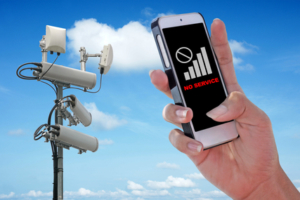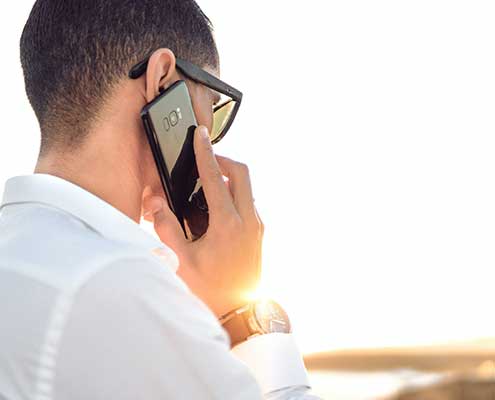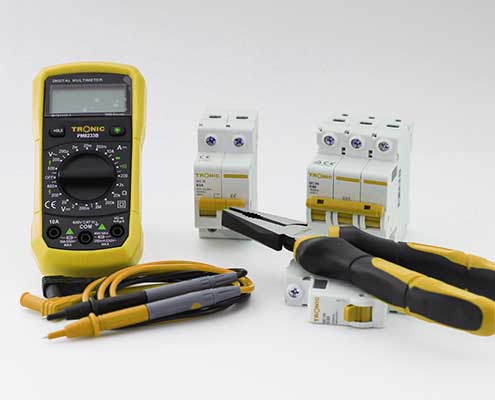Mobile Signal Boosters
How does a Mobile Signal Booster Work
Understanding mobile signal boosters
We rely on our mobile devices for nearly everything these days, from accessing our emails to checking the internet. With an increase in buildings and mobile device usage, clients often have a lack of reliable mobile service. A mobile signal booster is one solution to this dilemma. However, we often are asked how does a mobile signal booster work?
If you don’t know what a mobile signal booster is, it is a set of equipment that helps clients get a better mobile signal. Thus in areas where the signal may otherwise be weak. A mobile signal booster achieves this by broadcasting and boosting an outside signal. This is distributued throughout an internal office space or building. Now, the entire interior of the building has access to the improved mobile signal.
Are mobile boosters legal in the UK?
There use to be a time where mobile boosters were illegal to install and use in the UK. However, over the past 2 years, the rules and guidelines for mobile boosters in the UK has changed. Currently, mobile boosters are legal to install in the UK.
The Wireless Telegraphy (Mobile Repeater) (Exemption) Regulations 2018 is what prompted this change. This act which occurred in April 2018 outlines the rules and regulations for mobile booster usage in the UK. Specifically, two areas of installation are addressed in the legislation. This includes Statis Boosters for indoor applications, and boosters used within motor vehicles.
You can visit the website set up by Ofcom to see their explanation on the legitimacy of these units https://www.ofcom.org.uk/about-ofcom/latest/features-and-news/mobile-phone-repeaters
Ofcom Statement
“The first are known as static mobile phone repeaters. These are for indoor use, and are designed to improve coverage inside peoples’ homes, offices and other buildings. They must not be used in other situations. For example, while in motion, such as in a vehicle.
The ‘downlink’ from these repeaters (the part that connects the repeater to the mobile phone) must not be used outside or in semi-open locations. It must be used inside a building which has a ceiling or a roof.
The ‘uplink’ (the part that connects the repeaters to the mobile phone network) can be used either indoors or outdoors.
This type of repeater may not be helpful in all situations. However, they can help to boost indoor signals in situations where there is reasonable mobile coverage just outside the building, but indoor coverage is not good enough.
We have restricted these types of repeaters so they amplify the signal from only one mobile phone network at a time. However they may be re-configured to a different network”
Ofcom Summary
These Ofcom regulations provide important clarifications on regulations of the systems. These include that the system is only allowed and designed to amplify the mobile phone signal from ONE mobile phone network at one time.
Furthermore, a mobile booster must adhere to these additional standards: (1) the boosters are adhere with the license conditions of the mobile network operator. Furthermore that they can control them to turn them on or off or to configure them. (2) no other networks must be interfered with by the booster.
The signal can only broadcast from one provider at any time. However it can be reconfigured to a different network provider. In addition, it must boost 2G, 3G, and 4G. If the mobile booster works with more than one operator at the time, it will not be in compliance with the necessary rules and regulations.
Can I trust a mobile repeater to be effective and work?
A mobile repeater is some that’s functions can be found in its name. Thus it repeaters a signal it receives at it external antenna. The signal is taken, and then repeated throughout the building.
The effectiveness of a mobile repeater will therefore depend on how strong a mobile signal is outside of your building. First, it is important to ensure that you have good mobile signal outside your building. After, you can install data cabling and internal mobile repeater access points. This will make a mobile repeater effective and work within your building.
How do I operate a mobile signal booster?
By taking in a signal, a mobile booster will then broadcast it through your building. A mobile booster is composed of the following parts:
- Outdoor aerial
- In buiilding amplifier
- Internal antennas
- Internal data cabling
How you install the mobile signal booster depends on a variety of factors. These include the building size, layout, and its construction. Each wall in the building will lower the signal. In addition buildings that are denser with more walls will need more internal antennas.
Understanding the outdoor aerial
The outdoor or external aerial works like a canopy to create an additional signal for the mobile booster. It will only boost the signal it receives. If the signal outdoors is weak, the indoor signal the booster transmits will also be weak. Therefore, the position of the outdoor aerial is very important. This is to make sure you mobile booster functions at maximum capacity.
A professional will be able to know where the best location for the outdoor aerial is. The unit can be either uni-directional or omni-directional. Tuni-directional or Yagi will pull in a signal from a 45 degree scope, while the omni directional can see signal in a 360 degree coverage. Overall, a uni-directional pulls the signal from farther away.
Understanding the Internal Amplifier
The external amplifier will send its signal to the internal amplifier. The signal is then boosted throughout the building to various locations. The internal amplifier is usually located in the main communication room with regular IT equipment.
Internal Antennas
The internal antennas distribute the broadcast throughout the building. The number of internal antennas you will need will depend on the size and construction of the building. Furthermore how much of the building will need to be covered. Before installation, a signal check survey will be required to determine the best positions for the antennas. Antennas are usually placed out in the open since this is where they will work best.
Internal data cabling for mobile signal booster
The internal data cabling is what links together all the above elements. Data cabling is required for the internal and external amplifiers. Furhermore also from the internal amplifiers to the internal antennas. The location and the distance of the internal units can determine if a different cable needs to be used. A pre-site survey will be required to ensure we know all of your precise needs.
A summary of how does a Mobile Signal Booster work
In summary, installing a mobile signal booster is similar to installing new WiFi. Data cables run back and forth between a central point, units or antennas that are mounted to different areas to boost a signal. With your mobile signal booster, an external aerial that needs to be connected.
Then the system take the external carrier signal and distributes around your building via the internal data cabling and hardware
For additional electrical articles please visit our main BLOG page here














